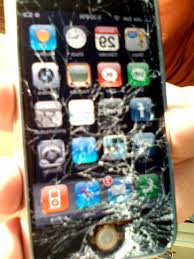Drug addiction, gambling addiction, alcohol addiction, even sex addiction - all pretty difficult to escape from, and all of them a habit. As is the addiction to struggle. Ever find yourself taking the longest, most arduous, most emotionally, mentally and physically taxing route to where you're trying to reach? Stressing and stressing, adrenals on full alert, till you reach your goal - exhausted, yet victorious! Are you addicted to the 'hurts so good' syndrome? Are you addicted to struggle?
I've been on what seems like a permanent cycle of super-charged "let's go for the uber challenge" route most of my adult life. And only recently have I made a conscious decision to get off the bloody hamster wheel. And let myself off the proverbial hook. There's a good reason why Wayne Dyer chose to call his seminal book: Life Was Not Meant To Be A Struggle.
When I first flicked through his homilies, 20 years ago on a road trip from rainy Adelaide to sweat-stained Darwin, I could barely contain my cynicism. What did he know!? Life was tough, of course it was. How could it be anything different? Arrogance of youth, or rather ignorance of youth. I'd never know it to be anything else. So I left that book of wisdom in a mall bookshop in Alice Springs, and never looked back. Until years later, when I finally understood what the guy meant. With the benefit of hindsight - and 20 year's life experience - I can see he was right all along.
Survival
As human beings, we are consciously, or unconsciously attempting to improve ourselves to test ourselves and become 'better' in some way. Nothing wrong in that - it's natural evolution. And we often define ourselves by the challenges in life we successfully overcome. Again, nothing wrong in that, either. But I'm not talking about healthy, inspiring challenges here, such as learning to paint, starting a new job, moving to another country or leaning a musical instrument. I'm talking about an ego-induced sense that survival itself has to be a struggle. I AM, I exist, because I struggle. I am driven and motivated by struggle. Get the picture?
Trade off
Clearly there has be a trade-off with this battling, military mindset. Even someone's language is a clue to their belief system: It's a minefield/battleground out there. I'm going to soldier on... Rally the troops...
So what are we getting out of this perpetual battle? Firstly, when we are seen to be struggling, it shows everyone else that we are not a quitter. We're trying hard, but it's external circumstances that refuse to play ball. It means that at a profound subconscious level, we feel powerless to affect change in our lives. That we are not fully able to take responsibility for our selves in some way.
Battling away is also a method of eliciting sympathy from others. Itself a huge energy boost. Everyone loves the underdog - especially in Britain. Hey, don't get too successful, otherwise we'll shoot you down. The tall poppy (another battleground imagery/alliteration) syndrome.
Purpose
Many of us have a profound fear of boredom, of having no purpose in life. And a profound fear of commitment... Just two reasons out of many for choosing to live life on (often) java-fueled red alert, and resist take a calmer, steadier, self-responsible and easier route to achievement.
How many of you know friends and acquaintances who are actually doing well in life, but still would prefer you to think that the going is tough for them? Someone, at some point in their lives has told them, either verbally or by living example, that life is a battle. They are living under the false assumption that if they are successful it has to be hard going. Hard work, yes, and persistence are two vital ingredients along the road to success. But not struggle.
Some of us firmly believe that life owes us a living. Why bother to shift when someone else, ie the state, can pick up the bills. This mindset of lack of contribution creates great internal struggle. Like many of these issues, it's connected with self-esteem issues.
Avoid asking for help?
Too many of us feel that we have to achieve it all alone. We fail to realize that other people are our greatest resource and that it's actually fun to co-create with others. You can be stimulated, share your knowledge and feel supported. So much better than battling on alone. Go on, reach out and ask someone for help today. Not only will you be receiving something special, you are also, very importantly, giving someone else the chance to give.
Survival struggles are not about creating opportunities, they are more about remaining in our reptilian brain of instinct and survival. It's all about the survival of me, myself and I. And has nothing to do with being part of the collective. Of being of service to others.
Another reason for the continual battle is that we fail to recognize values and beliefs collision in our lives. Hence we never quite achieve the success we desire. One half of us is going in one direction - towards happiness, and the other is yanking us back in an attempt to avoid potential pain which we may have to endure to achieve our idea of happiness. A double-edged sword.
Self-denial
Another reason for this internal battle, for the enemy always lies within, is a mindset that denies us the very things we love. We refuse to give ourselves the very things that can make us happy and fulfilled. Therefore we choose unhealthy relationships, bad food, careers that don't satisfy us, toxic environments. And the excuses we give ourselves not to be creative (no time, no money, no good...) the list is endless. The internal battle continues... Ouch!! Indeed, many of us on the struggling route worry that if it all became the Big Easy:
a) life would be boring.
b) we'd be somehow less deserving of our successes.
c) we'd lack the drive to achieve further success. How nuts is that?!
Turning struggle into opportunity
As with most habits, after years of practice they become subconscious. So, the first way to stop the struggle is to become aware that we have a habitual behavior of struggle. Look at all areas of your life: job, family, creative/spiritual life, finances, and environment. Which areas are you struggling in? Is this a pattern or a new circumstance? What are you getting out of this pattern of behavior? Is the trade-off past its sell by date, leaving you frustrated or angry? Or are you still getting what you want out of life because of it? Be honest with yourself. And be kind to yourself.
Practice living and being in your intuitive (right-brain). Creative. I dwell in possibility. Instead of ego personality survival, take up activities to boost your intuition and your connection to spirit/source. The paths that will take you there include oga, meditation, playing music, "me" time, walking in nature. Look at the trees: as above so below. Firmly rooted in the earth, yet reaching up to embrace spirit. For we are all spirit descending into matter, and matter arising into spirit simultaneously.
Practice moments of stillness. Just before you go to sleep, review your day. And again, just a 5 minutes of mindless being before you get up is wonderful. Practice gratitude. Make a list of 10 things in your life that you are thankful for. Make another list of 10 things in your daily life that make you happy. This could be a smile from the postman, a hot shower after exercise, sharing a beautiful sunset with someone you love, to the smile on your child's face as they are sleeping.
What do you LOVE?
Most of us are well practiced in telling ourselves exactly what we don't want in life, but we ain't so good at listing all the things that we love. Another great boost to yourself is to write down all the things you love. What would you LOVE to be doing in life. No obstacles. What makes your heart sing? And what do you love about yourself. If you struggle with this one, ask your friends what they love above you. Pin this up somewhere you can see it daily. Believe it. And be live it....
Above all become conscious when feel yourself entering into a struggle cycle... Stop. Look. Listen. Acknowledge and feel into the tension but refuse to be drawn into battle with it. Observe it, play with it and above all, don't take life, or yourself, too seriously. Life really was never meant to be a struggle.
© Copyright: Gina Baksa























